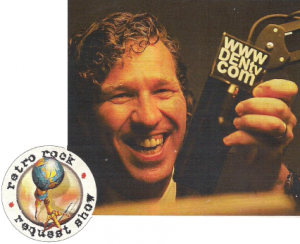HISTORY OF INNOVATION
PHASE 1: 1996-2000
Internet Radio is No Superstation, But That's Part of Its Beauty
Cyberscan small talk
September 1998
REPORT ON BUSINESS
by Jared Mitchell
HISTORY OF INNOVATION
PHASE 1: 1996-2000: The Content Years
- Vancouver Firm Rocks the Net with Vintage Tunes
- Valley Radio ‘Round World
- Net Company Makes Radio Waves
- 1997 footage of the World-Wide Retro-Rock Request Show
- Internet Radio is No Superstation
- Junos 1998 Cybercast Awards Show an Internet first
- Full Stream Ahead
- The (Your Name Here) Show
- Streaming in Cyberspace – the Webcast Revolution
- Tuning In To The Net
- Casting a Wider Web
- Live videocasts over the Net becoming more popular
- Must-See Net TV
HISTORY OF INNOVATION
PHASE 2: 2001-2009: B2B Platform Evolution
- Canucks Fans Score Big Online
- Another First for INSINC
- INSINC Draws on Diverse Skills
- Streaming Video to Bloom Under Budget Cuts
- INSINC Leading the Way in Internet Broadcasting
- INSINC Competes with Satellite, Cable TV Over Internet
- Burnaby Company Nets Online WHL Rights
- INSINC’S Junior Hockey Service
- INSINC Featured on GetConnected
- NeuLion Acquires Online Sports Broadcaster INSINC
HISTORY OF INNOVATION
PHASE 3: 2009 - Present
- Yare Media Approved as Eligible Business Corporation
- Yare Delivers Record Breaking UEFA 2016 Numbers
- YareCAST: live video streaming to Google Cast devices
- CFL Partners with Yare to Deliver 104th Grey Cup
- Yare Partners with Internationally Acclaimed Music Group to offer Live Concert online in HD
- Yare partners with Roger’s to deliver live curling events in HD world-wide
- Yare Media to deliver world class athletics events
- Yare Featured in OGLOBO: The Internet and Sports
- Canada West & Yare partner on revamped TV
- Yare Media participates as client of ReFuel entrepreneurship initiative
- Yare delivers CFL 2017 Season live streams in 130 Countries
- Visaic Acquires Video Platform Player Yare

“Sometimes sappy, sometimes happy,” says the Web-page pitch for Brent Ingalls’s Internet radio show dedicated to the best love songs of the ’70s through the ’90s. Ingalls and fellow broadcasters Adonica Joette of the Astrology Hour and Allan Holender of the Home Biz Show are heard around the world on Vancouver-based DENradio, an all-Internet broadcaster that has turned the conventional rules about radio upside down. Suddenly, the costs and audience numbers and reach are about a whole new world, albeit a little bitty one.
The glory of Internet radio is delivery costs. Whereas $1,000 to $4,000 might get your weekly one-hour show distributed over the air, it costs just $60 via the Internet, thanks to elimination of over-the-air broadcasting and satellite up-links. The downside: We’re talking audiences that wouldn’t fill a church basement. DENradio’s most popular show, Tom Lucas’s Retro-Rock Request Show, pulls 400 people at a time. “This is narrowcasting; we’re not fooling anybody,” says Hugh Dobbie, president of Interactive Netcasting Systems Inc (INSINC).
“We’re not hitting all 50 million Net users, but nobody is. The Net is full of narrow markets.” But, says Dobbie, his station’s listeners stay, browse pages and interact with the host via chat rooms. It is not unusual for, say, Chris Lindgren of European Connection to greet listeners by name when they drop by the Internet site.
“We can tell you exactly who is listening, where they are and how long they stay. Try that with conventional radio.”
Audiences for the Vancouver station’s programs are a global mix: South Korea, the United States, France, Britain and the Caribbean.
Dobbie is beginning to put up advertising on the Website. The going rate is a pittance – $30 to $50 per thousand listeners – but he’s making money through repackaging the station’s professional-quality original programming and syndicating it to conventional radio stations. He admits the business is not wildly profitable, but it is intensely exciting in the new ground it’s breaking.
Interactive Netcasting has already made forays into Internet Television, including a behind-the-scenes feature at last spring’s Juno Awards and coverage of the Banff Television Festival.
For Dobbie, the next step is to build an Internet-protocol broadcasting network in partnership with AT&T Canada, onto which anyone, anywhere, with very little money, can mount their own radio or TV show.
HISTORY OF INNOVATION
PHASE 1: 1996-2000
- Vancouver Firm Rocks the Net with Vintage Tunes
- Valley Radio ‘Round World
- Net Company Makes Radio Waves
- 1997 footage of the World-Wide Retro-Rock Request Show
- Internet Radio is No Superstation
- Junos 1998 Cybercast Awards Show an Internet first
- Full Stream Ahead
- The (Your Name Here) Show
- Streaming in Cyberspace – the Webcast Revolution
- Tuning In To The Net
- Casting a Wider Web
- Live videocasts over the Net becoming more popular
- Must-See Net TV
HISTORY OF INNOVATION
PHASE 2: 2001-2009
- Canucks Fans Score Big Online
- Another First for INSINC
- INSINC Draws on Diverse Skills
- Streaming Video to Bloom Under Budget Cuts
- INSINC Leading the Way in Internet Broadcasting
- INSINC Competes with Satellite, Cable TV Over Internet
- Burnaby Company Nets Online WHL Rights
- INSINC’S Junior Hockey Service
- INSINC Featured on GetConnected
- NeuLion Acquires Online Sports Broadcaster INSINC
HISTORY OF INNOVATION
PHASE 3: 2009 - Present
- Yare Media Approved as Eligible Business Corporation
- Yare Delivers Record Breaking UEFA 2016 Numbers
- YareCAST: live video streaming to Google Cast devices
- CFL Partners with Yare to Deliver 104th Grey Cup
- Yare Partners with Internationally Acclaimed Music Group to offer Live Concert online in HD
- Yare partners with Roger’s to deliver live curling events in HD world-wide
- Yare Media to deliver world class athletics events
- Yare Featured in OGLOBO: The Internet and Sports
- Canada West & Yare partner on revamped TV
- Yare Media participates as client of ReFuel entrepreneurship initiative
- Yare delivers CFL 2017 Season live streams in 130 Countries
- Visaic Acquires Video Platform Player Yare